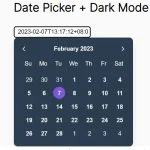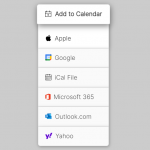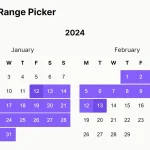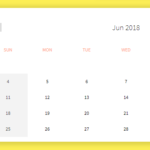| Author: | |
|---|---|
| Views Total: | 10,517 views |
| Official Page: | Go to website |
| Last Update: | December 3, 2019 |
| License: | MIT |
Preview:

Description:
Calendarize is the simplest JavaScript implementation of a customizable yearly calendar for your web applications.
How to use it:
Add the JavaScript library calendarize.js into your webpages.
<script src="calendarize.js"></script>
Create an empty container for the calendar.
<div id="calendar"></div>
Render a yearly calendar within the container you just created.
var $calendar = document.getElementById("calendar");
var currentYear = new Date().getFullYear();
var calendarize = new Calendarize();
calendarize.buildYearCalendar($calendar, currentYear);Apply your own CSS styles to the calendar.
.month {
width: 300px;
padding: 20px;
background: #fff;
position: relative;
overflow: hidden;
float: left;
margin: 20px;
height: 350px;
}
.month h3 {
text-align: center;
margin: -20px -20px 30px -20px;
padding: 20px 0;
background: red;
color: #fff;
}
.day, .dow, .dummy-day {
display: inline-block;
width: 12.7864%;
float: left;
text-align: center;
margin-right: 1.5%;
}
.dow {
font-weight: bold;
margin-bottom: 10px;
}
.day {
color: #333;
cursor: pointer;
box-shadow: inset 0 0 0 1px #eee;
}
.day.weekend { background: #fafaff; }
.day:hover { background: yellow; }
.day, .dummy-day {
height: 40px;
line-height: 40px;
margin-bottom: 1.5%;
background: #fff;
}
.dummy-day {
background: #f5f5f5;
color: #ccc;
}Possible options.
var opts = {
showMonth: true,
showDaysOfWeek: true,
showYear: true,
clickHandler: function(e) {
var day = e.target.getAttribute("data-date");
alert(day);
}
};Changelog:
12/03/2019
- Improvements.










